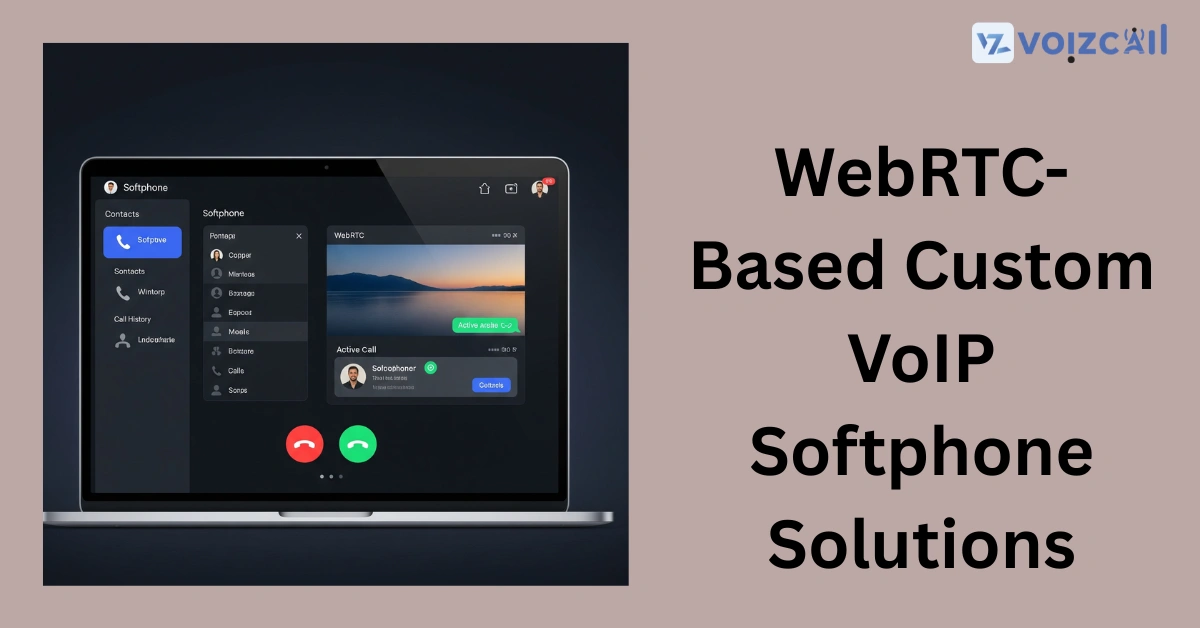


03/Jun/2025
If you’re running a business or building your own communication tool, you’ve probably heard of VoIP and WebRTC. Now imagine combining them into one powerful solution — that’s where WebRTC-based custom VoIP softphones come in.
Will walk you through what they are, why they matter, and how you can create one that fits your unique needs. Whether you're a developer, business owner, or just tech-curious — you're in the right place.
What Is a WebRTC-Based Softphone?
Let’s break it down:
WebRTC (Web Real-Time Communication) is a technology that lets you make voice and video calls right from a web browser — no extra downloads needed.
A VoIP softphone is a software-based phone you can use on your desktop or mobile to make internet calls.
Put them together and you get a powerful, browser-based communication tool. With a custom VoIP softphone using WebRTC, you can make secure, high-quality calls — and even record them.
Why Choose a Custom WebRTC Softphone?
Here’s why more businesses are switching to customized WebRTC softphones:
No hardware required
Works in browsers or mobile apps
Easily integrates with CRM or support systems
Scalable for small teams or large call centers
Secure and reliable for business-grade calling
If you want something more than a generic solution, a softphone solution for WebRTC SIP calling is the answer.
Key Features of a Great WebRTC VoIP Softphone
Let’s look at some features to include when building your own:
Voice & Video Calling
Crystal-clear audio and video using secure WebRTC technology.
Call Recording
With a WebRTC VoIP softphone with call recording, you can keep track of customer interactions for training or compliance.
SIP Integration
Your softphone should support WebRTC SIP calling for seamless connections to existing VoIP infrastructure.
Contact Management
Call / Email for Sales Inquiry Today
Sync with CRM tools to quickly access customer data during calls.
Call Transfer & Hold
Advanced call controls to handle calls like a pro.
Web & Mobile Access
Use your softphone on a browser, smartphone, or tablet — anytime, anywhere.
How to Build a Customized WebRTC Softphone
Ready to get started? Here’s a simple roadmap:
Choose your tech stack
Use open-source libraries like SIP.js or JsSIP for WebRTC SIP support.
Design a clean user interface
Keep it user-friendly with features like a dial pad, call logs, and contacts.
Add call features
Include essentials like mute, hold, transfer, and call recording.
Connect to SIP server
Use services like Asterisk, FreeSWITCH, or Kamailio for backend connectivity.
Secure your app
Enable encryption (TLS, SRTP) and proper authentication methods.
Test thoroughly
Make sure it works across devices and browsers.
Not a developer? No worries! There are companies that can build a custom VoIP softphone using WebRTC tailored to your business.
Who Should Use a WebRTC Softphone?
WebRTC-based softphones are ideal for:
Remote Teams: Easy access from anywhere with an internet connection
Call Centers: Scalable and feature-rich tools for managing large volumes
Customer Support: Instant connection with customers directly from the browser
Startups & SMBs: Affordable, customizable calling solution without hardware
Final Thoughts: Make Calls Smarter, Not Harder
A WebRTC-based custom VoIP softphone gives you complete control over how your business communicates. From simple voice calls to advanced features like recording and SIP support, you get everything you need — your way.
Whether you're exploring how to build a customized WebRTC softphone, or you're ready to integrate softphone solutions for WebRTC SIP calling, now’s the time to make the switch.
Are You Ready to Build Your Own WebRTC Softphone?
What features do you need most in a custom VoIP softphone? Have questions about building or integrating one into your business? Let us know — we’re happy to help!